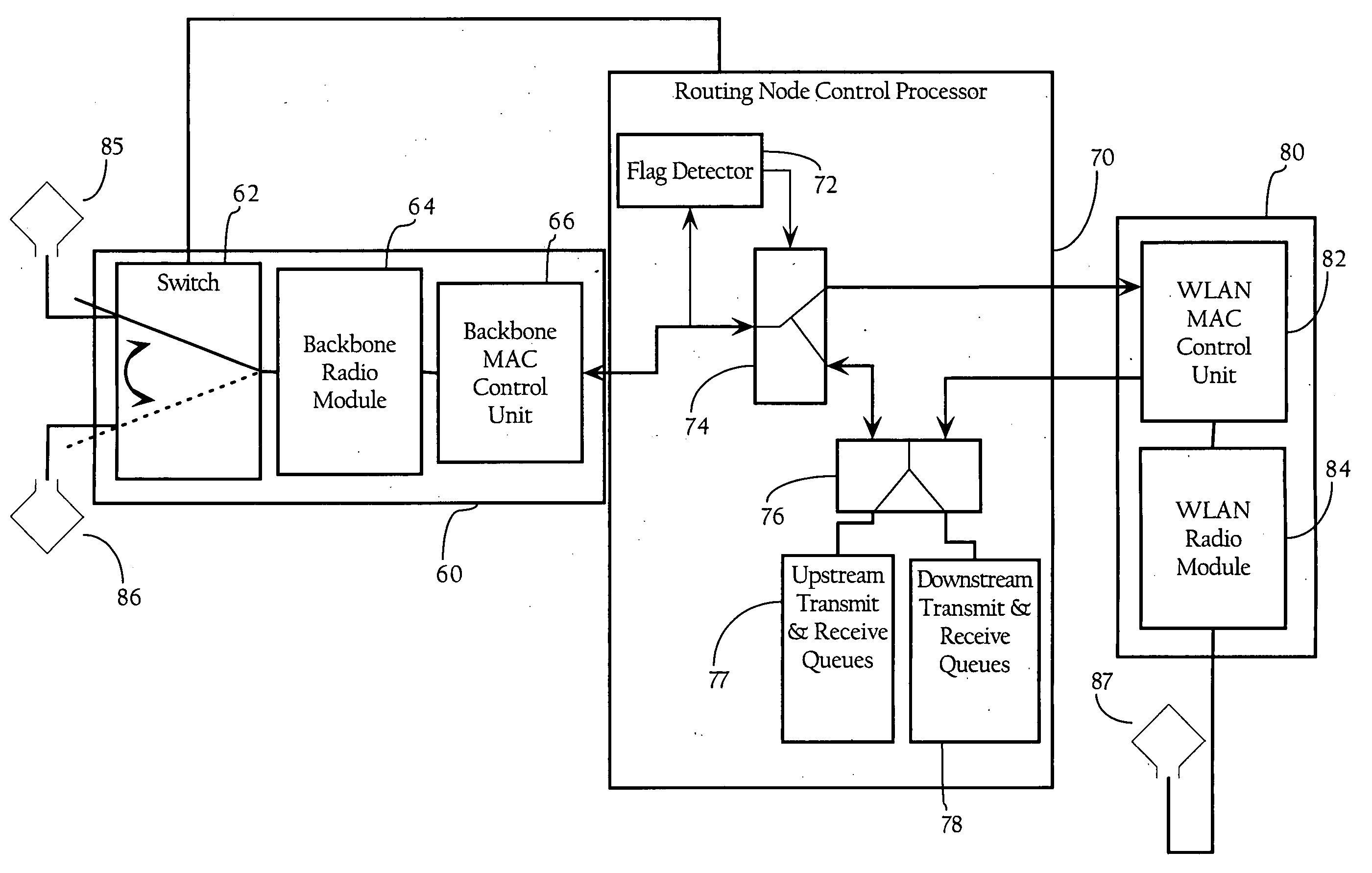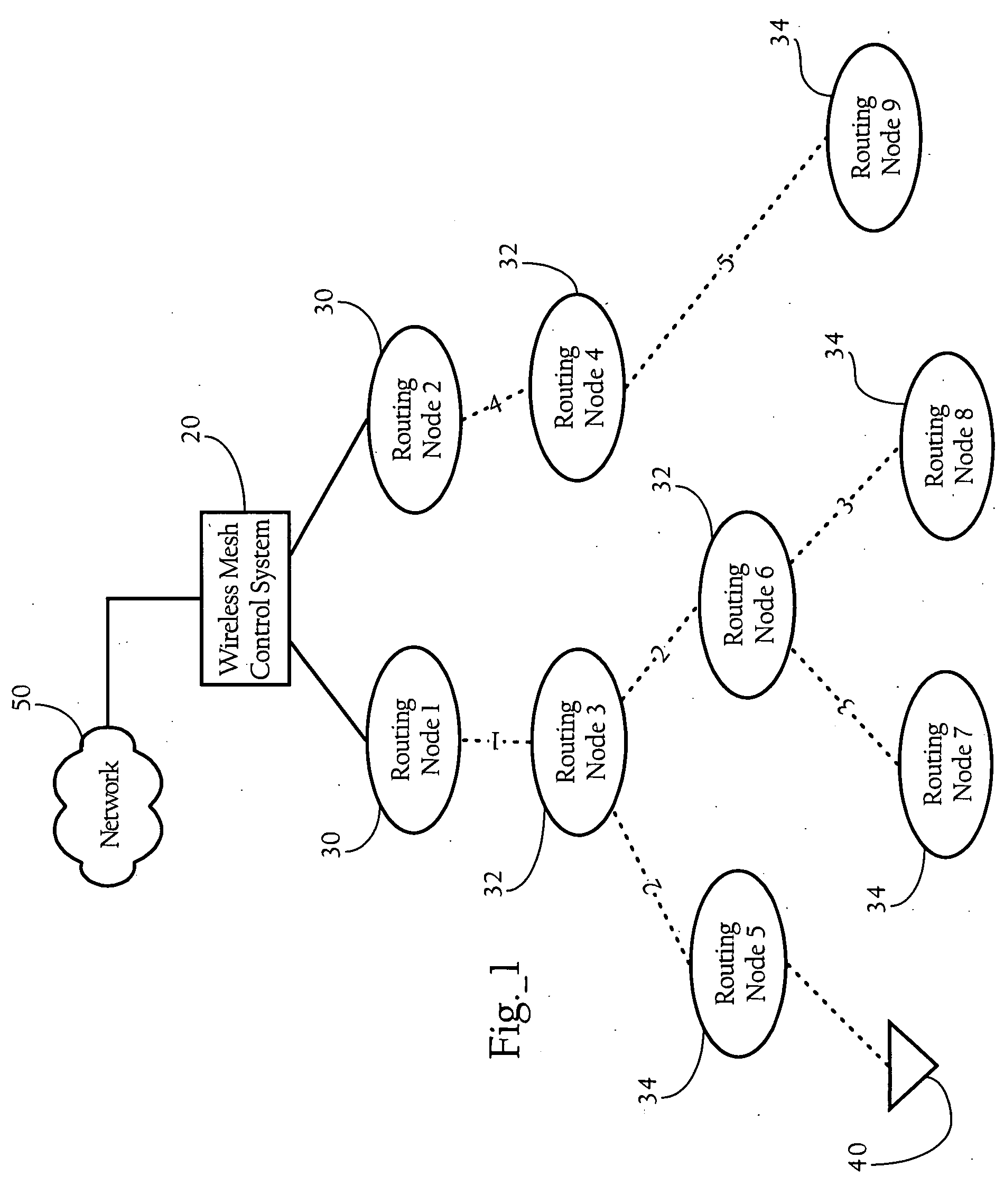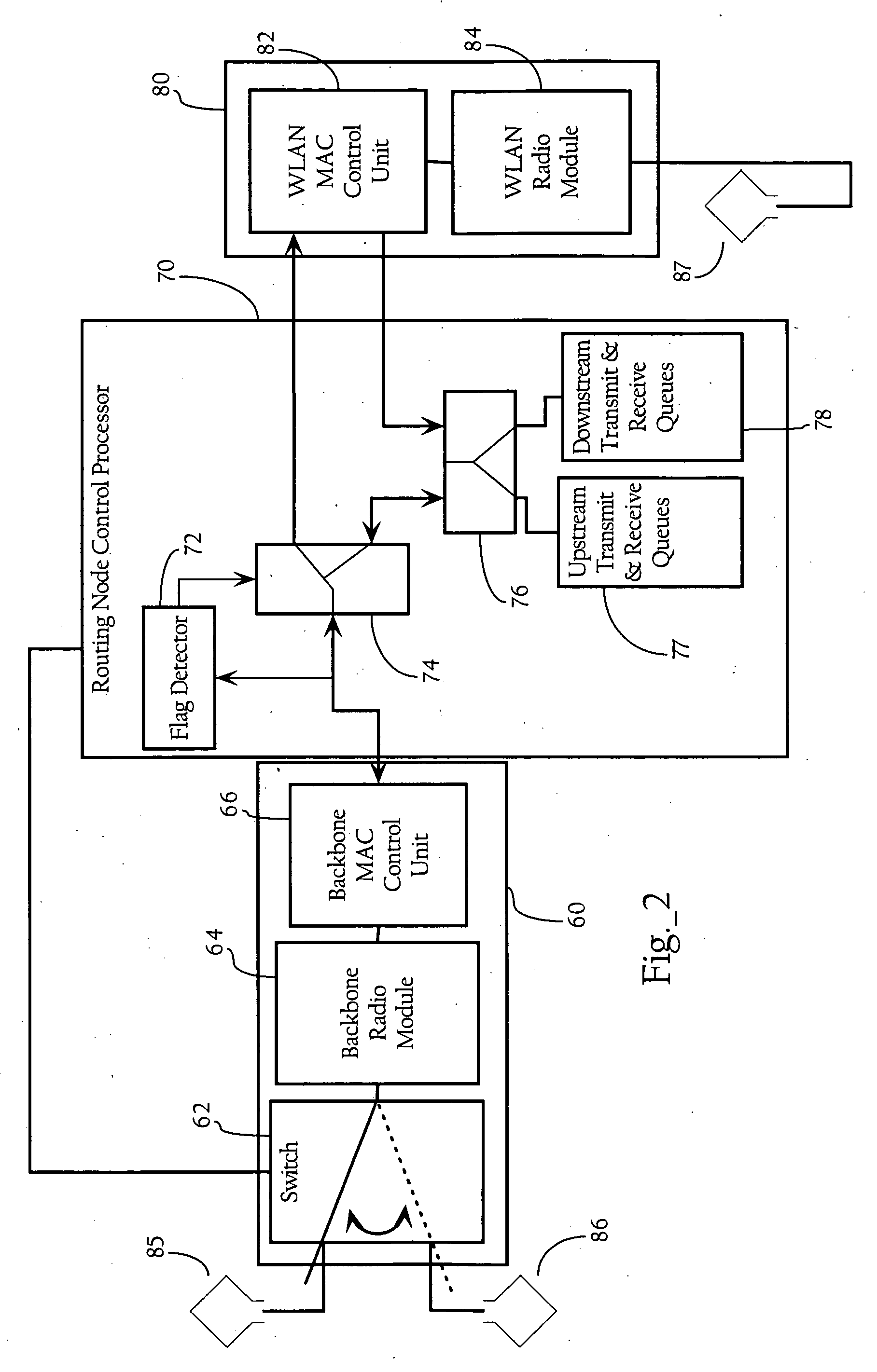Cross-layer design techniques for interference-aware routing configuration in wireless mesh networks
- Summary
- Abstract
- Description
- Claims
- Application Information
AI Technical Summary
Benefits of technology
Problems solved by technology
Method used
Image
Examples
Embodiment Construction
A. Overview
[0014] The present invention provides methods, apparatuses, and systems directed to facilitating increased throughput in wireless mesh networks. Generally, according to one implementation of the present invention, routing nodes in a wireless network, such as a wireless mesh network, combine metrics corresponding to the link and network layers to select a route to a root node in a wireless mesh network. While the embodiments of the present invention disclose herein are described in the context of hierarchical wireless mesh networks implementing tree-based routing protocols, the present invention may also apply to other types of networks supporting and dynamically configuring paths to destination nodes. In one implementation, each routing node generates link layer metrics and network layer metrics. Link layer metrics are statistics measured at the data link layer and, in one implementation, may include a queued packet delivery ratio (QPDR) and a transmitted packet delivery ...
PUM
 Login to View More
Login to View More Abstract
Description
Claims
Application Information
 Login to View More
Login to View More - R&D
- Intellectual Property
- Life Sciences
- Materials
- Tech Scout
- Unparalleled Data Quality
- Higher Quality Content
- 60% Fewer Hallucinations
Browse by: Latest US Patents, China's latest patents, Technical Efficacy Thesaurus, Application Domain, Technology Topic, Popular Technical Reports.
© 2025 PatSnap. All rights reserved.Legal|Privacy policy|Modern Slavery Act Transparency Statement|Sitemap|About US| Contact US: help@patsnap.com



